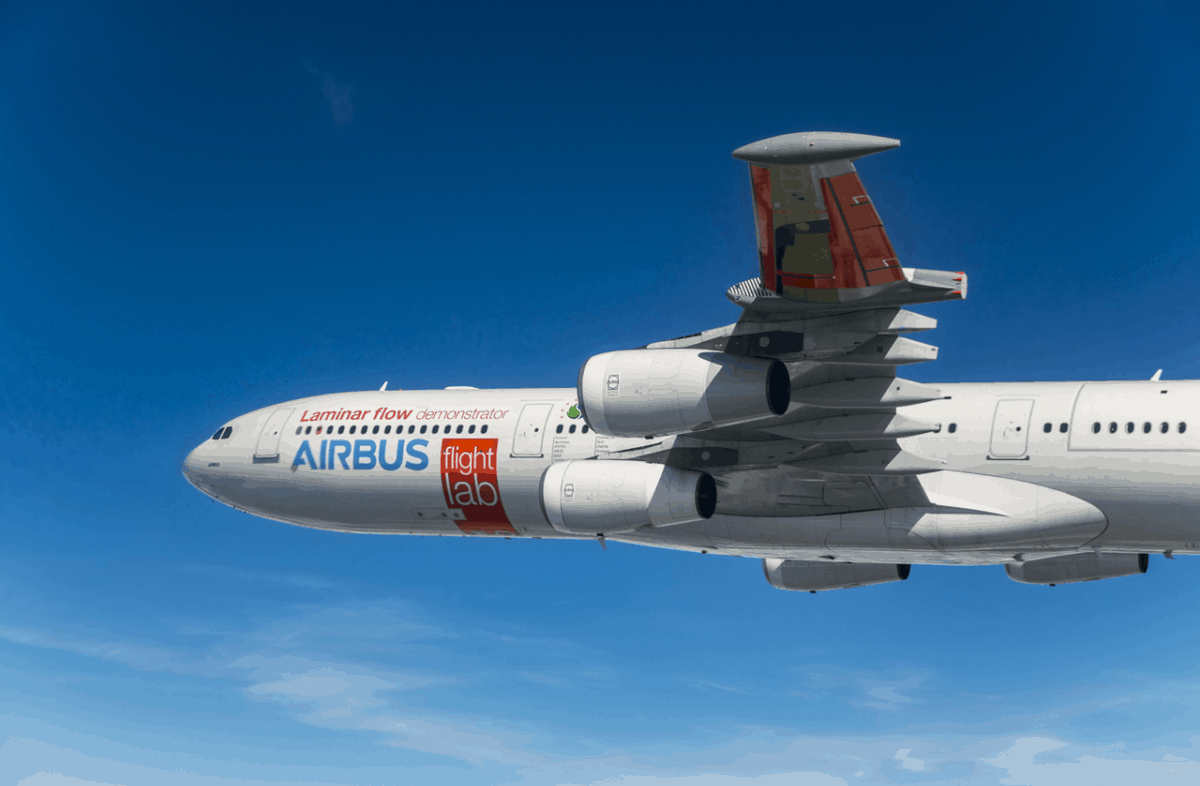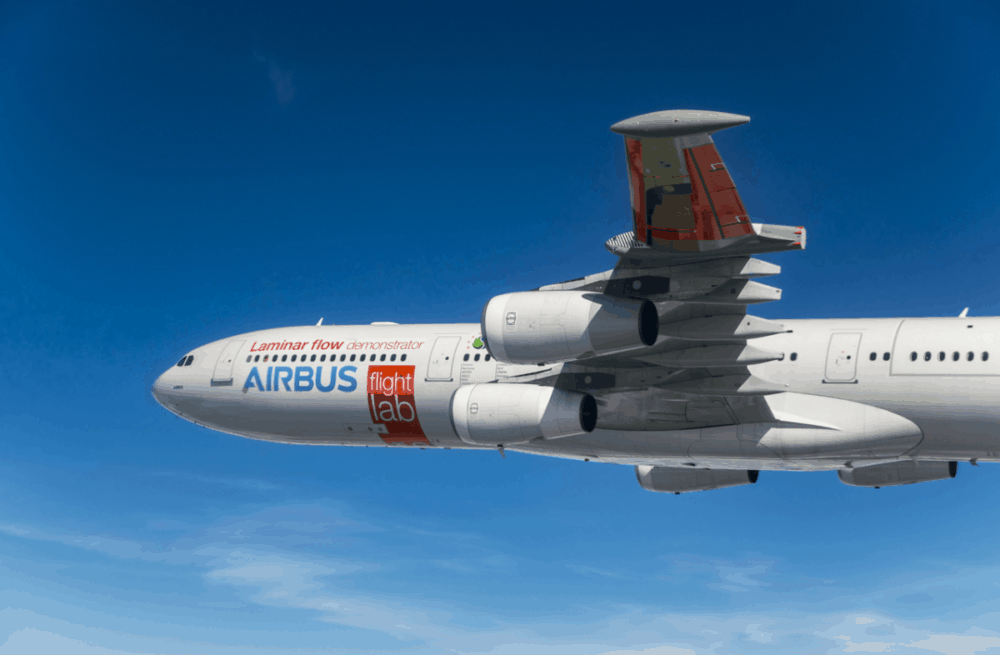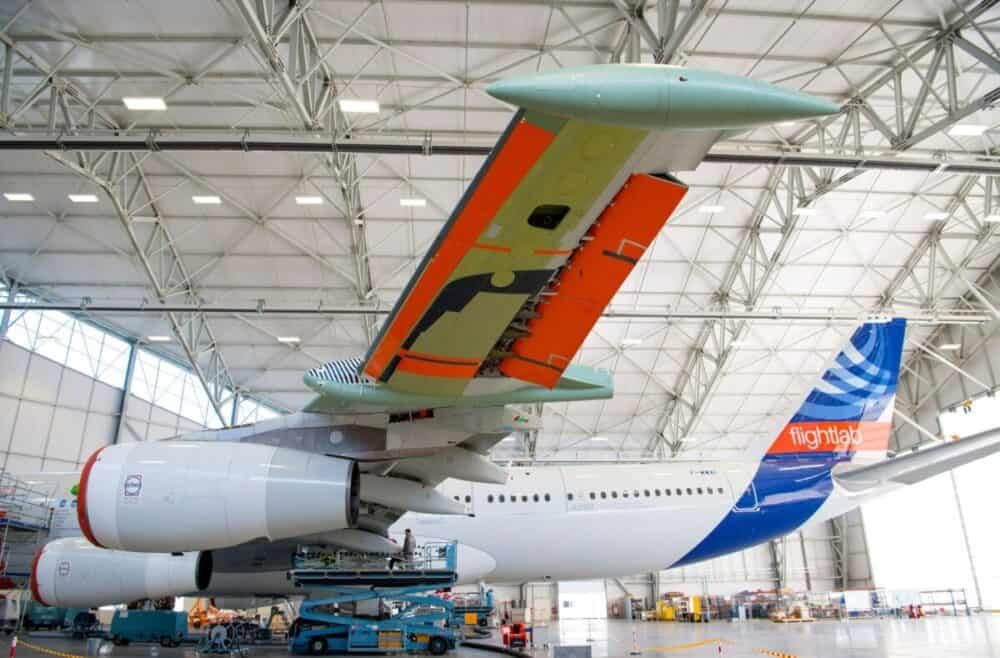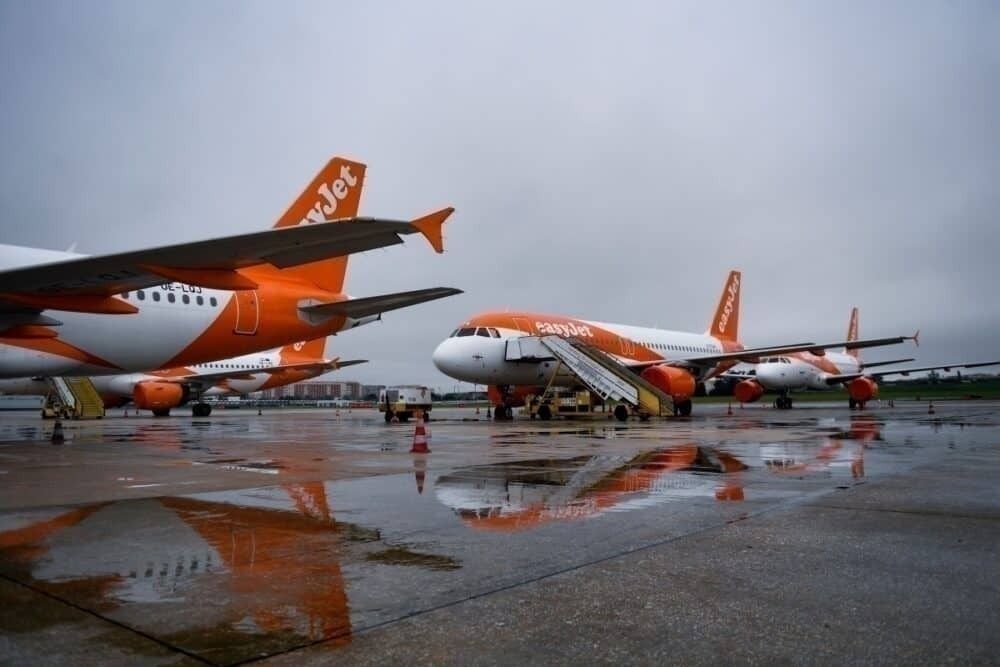In 2018, Airbus made big waves in the aviation industry with reports that they were close to creating a new type of wing. Airbus deployed this new wing design on a project called the BLADE, which reduced the fuel burn of the aircraft in flight by around 5%. What happened to this project? And what are the next steps?
What is the Airbus BLADE?
BLADE stands for Breakthrough Laminar Aircraft Demonstrator in Europe. It is a testbed aircraft, an Airbus A340-300, with a modifiable wing that can be changed to test different forms and functions.
Laminar flow is a term used in fluid dynamics to describe how smoothly particles flow, either particles of a gas or a liquid. Particles demonstrating laminar flow don't mix; they flow without interacting (like two cars driving in parallel on a highway).
In aviation, it is used to describe how turbulent air is after it passes over the wings. If a wing creates a lot of turbulence, then there is less laminar flow and thus more drag. More drag means more fuel burn, and higher fuel burn means it costs more for the aircraft to fly.
Stay informed: Sign up for our daily aviation news digest.
What has Airbus learned so far?
Part of the challenge of achieving laminar flow is in the design of the wings. It is a challenge to develop a wing that is simultaneously smooth enough to reduce drag in flight, has retractable slats and fasteners, robust enough to withstand ice and rain, and strong to hold heavy, powerful engines.
But Airbus has gotten close with its A340. The outside of the wings is carbon fiber reinforced plastic, with two ailerons to on either side to funnel air into a laminar flow. Also, the wings have a sweep of only 20 degrees, as opposed to 30 degrees for most aircraft.
This new design is proven to reduce friction drag by 50% and the overall aircraft drag by 8%. That is a saving of 5% of fuel over 800 nautical miles (1,480km). The aircraft achieved laminar flow at up to Mach 0.75, slower than the normal cruising speed of an A340, but with minimal boundary layer separation up to Mach 0.82.
As you can see, if this aircraft wing design were implemented to short-haul low-cost-carrier airlines like easyJet, it would be a total gamechanger. They would be able to undercut the competition and offer reduced fares to passengers.
What is the current progress?
The project in 2018 was incredibly successful, and Airbus has said that the improvements could be rolled out to its production line as soon as 2021.
"The test has shown the door is wide open to employing the technology on a potential next-generation single-aisle aircraft from the late 2020s," said Airbus senior vice-president research and technology Axel Flaig in 2018, reported by Flight Global.
In 2019, Airbus moved forward with its experiments to test different tweaks to its wing design, such as focusing on wing confirmation and a fixed Kruger flag.
Before the current aviation crisis hit in 2020, Airbus planned to test morphing wings on the A340 in May. Morph wings replicate the precise muscle movements made by bird wings, which allow them to make subtle course corrections and preserve the laminar flow. If Airbus can replicate morph wings into this A340 test aircraft, then the results could change the aircraft industry forever.
What do you think? Would you like to fly on the test A340? Let us know in the comments.




